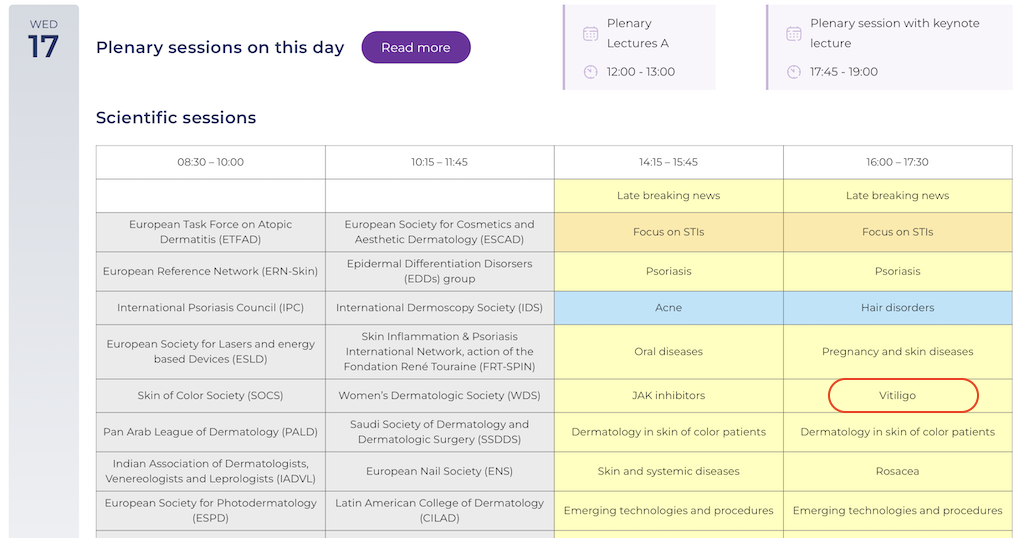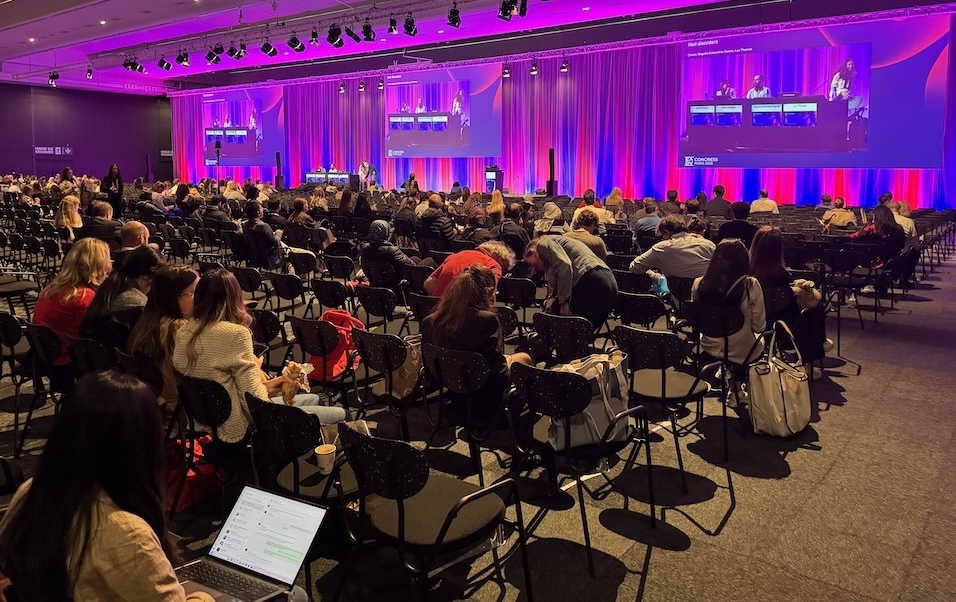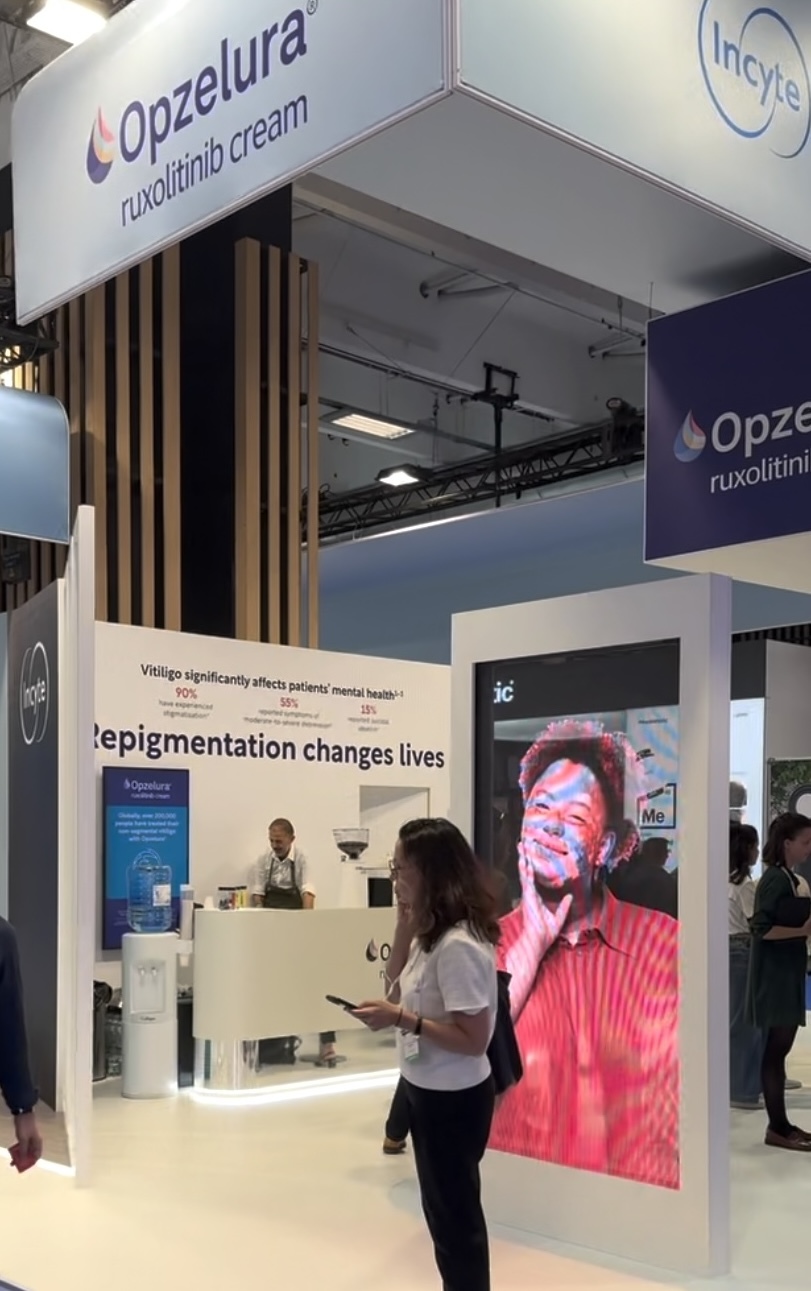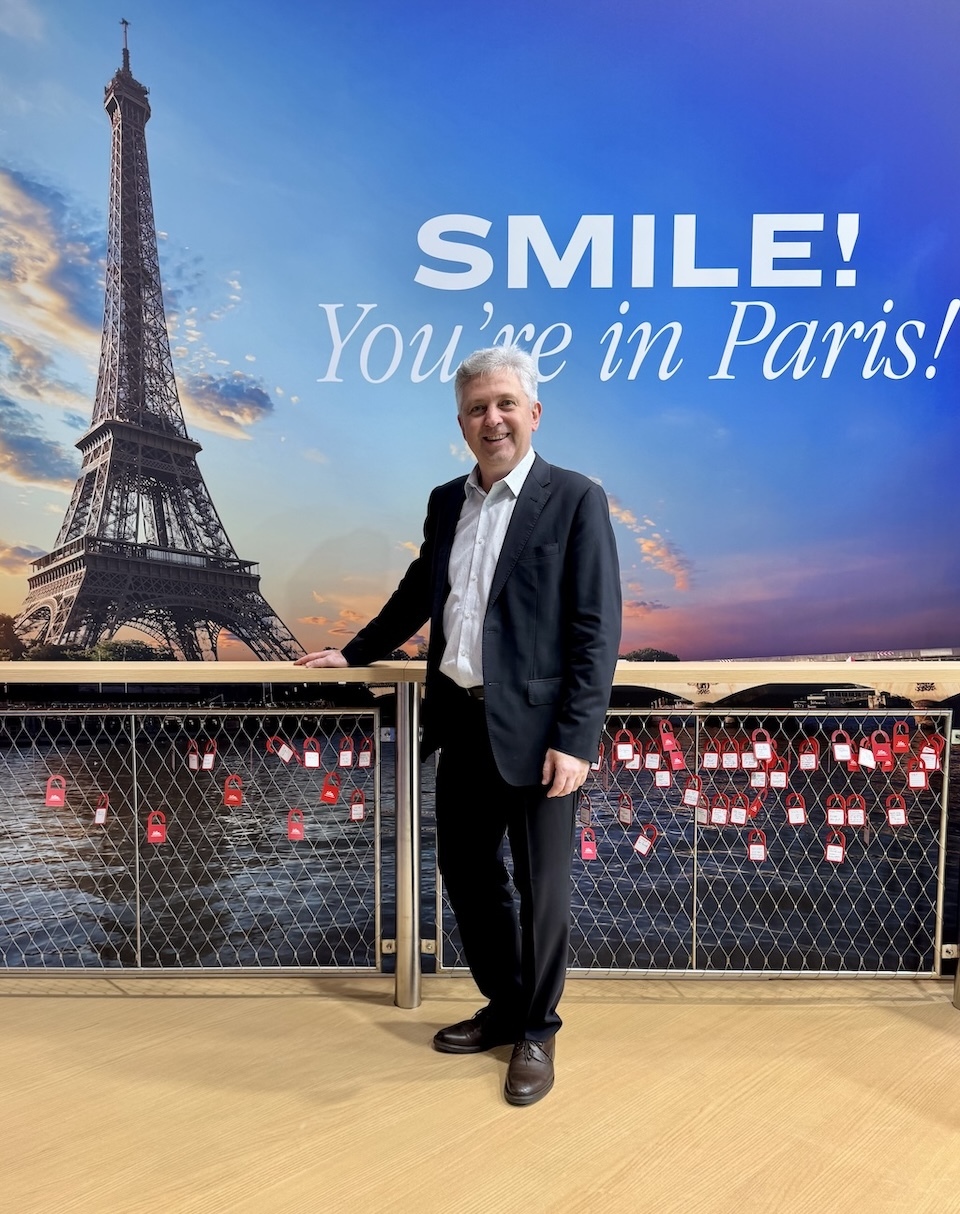New
Paris, Pharma, and a New Era for Vitiligo
This year’s European Academy of Dermatology and Venereology (EADV) Congress in Paris wasn’t about browsing trade booths or collecting freebies (not that it ever was, in our case). The real work happened behind closed doors — in a series of focused, forward-looking meetings with industry leaders. Can’t name names (NDAs are sacred), but here’s what I can say:
Vitiligo has never received this much attention from Big Pharma. Ever.
Thanks to a deeper understanding of the disease’s underlying mechanisms, a new wave of drug candidates is now moving into Phase II trials — that’s human testing, for those keeping score. Multiple companies are advancing JAK inhibitors and biologics (both oral and topical), and new targets like IL-15 are entering the pipeline. If timelines hold, we could see these next-generation therapies on pharmacy shelves within just a few years.
What’s even more remarkable? The usual cutthroat competition is giving way to a surprising level of cooperation behind the scenes. Big players that might fight over other markets are now inviting new entrants into the vitiligo space. There’s a shared recognition that narrowing the field — quickly and transparently — to the safest, most effective therapies is in everyone’s interest. Especially for patients.
And the narrative around vitiligo is finally catching up with reality of 5 phenotypes. The condition is no longer dismissed as “just skin deep.” In clinical and industry circles alike, it’s now seen for what it truly is: a chronic autoimmune disease that often demands systemic, long-term treatment. The most promising therapies are no longer focused on covering up white patches — they aim to treat the underlying immune dysfunction that causes them.
JAK inhibitors, anti–IL-15 antibodies, and other pathway-specific immunomodulators now sit at the center of both scientific research and strategic planning.
Throughout these meetings, one tool kept coming up — the Vitiligo Patient Journey Map. We’ve been using it as a visual reference, and frankly, it’s become a hit. Big Pharma teams love how it lays everything out with clarity, precision… and just enough humor to break the ice. It’s become the perfect conversation starter — and a reminder that behind every data point is a real person navigating a frustrating, often misunderstood condition.
While in Paris, we also held the first planning session for World Vitiligo Day 2026. After this year’s record-breaking success in Toronto — with 60 million digital engagements on June 25th alone — the bar is high. But we’re ready to raise it again.
Next stop: Chandigarh, India, under the leadership of Professor Davinder Parsad.
It’s going to be big. Bigger than anyone thought possible a year ago.
Stay tuned. The future of vitiligo care isn’t coming — it’s already rolling.

Yan Valle
Professor h.c., CEO VR Foundation | Author A No-Nonsense Guide To Vitiligo




Dig deeper:
- 📌 Vitiligo Drug Pipeline Analysis and Market Insights
- Biologic Therapies for Vitiligo: A New Era of Hope
- Rethinking Vitiligo – Five Distinct Faces of a Complex Disease
Or listen to podcast:
- Vitiligo Pipeline 2025: Winners, Watchlist, What’s Next (Ep. 41)
- Sixty Years Of Vitiligo Research — Where Are We Now and What Comes Next? (Ep. 35)
Our podcast Deep Dive In Vitiligo is available on all digital platforms, like Apple Podcasts, Spotify, Amazon, YouTube Music, Podcast Addict, iHeart and elsewhere.
FAQOther Questions
- Is there a traditional medicine to treat vitiligo?
Traditional remedies can play a supportive role in managing chronic, metabolic, and stress-related conditions—particularly early in the disease process, before significant tissu...
- Who is prone to vitiligo?
Vitiligo can affect anyone, regardless of gender, age, or race. Vitiligo prevalence is between 0.76% and 1.11% of the U.S. population, including around 40% of those with the con...
- Which therapy has minimal side-effects?
Dead Sea climatotherapy is a unique and highly effective treatment option for vitiligo, offering a top-tier safety profile and natural therapeutic benefits. Its combination of p...
Though it is not always easy to treat vitiligo, there is much to be gained by clearly understanding the diagnosis, the future implications, treatment options and their outcomes.
Many people deal with vitiligo while remaining in the public eye, maintaining a positive outlook, and having a successful career.
Copyright (C) Bodolóczki JúliaBy taking a little time to fill in the anonymous questionnaire, you can help researchers better understand and fight vitiligo.
